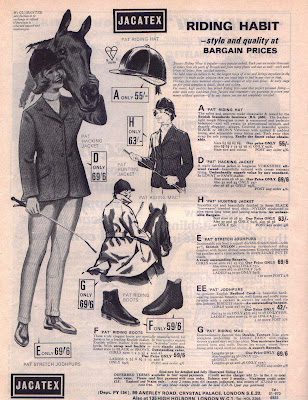And the next one is... Pony Books in the 1990s
Disapproval of pony books by critics of children's fiction may have had an impact on the British market, but it certainly didn't in America. British librarians tended to view pony fiction as elitist and outmoded: American librarians saw it as a way of hooking in readers. Terri A Wear wrote Horse Stories, an Annotated Bibliography in 1987 specially for American librarians wondering which horse books to recommend to their horse mad readers.
Whatever the British educational and literary establishments thought, girls still loved ponies, and they still wanted to read about them. Publishers wanted to feed this habit, and there were ready-made solutions in America. Series fiction had long had a strong hold on the American market, with organisations like the Stratemeyer Syndicate developing ideas for series and then getting them produced by teams of authors, thereby ensuring continuity, and length. The average author is probably going to be heartily sick of their characters after a few years, but the reader is not. Having different authors contribute under a pseudonym means the reader can be indulged, almost ad infinitum. And she was.
In the 1990s, Bantam Books published their Saddle Club series in the UK. It was already a huge hit in the United States. Bonnie Bryant’s creation was the story of three girls, Carol, Lisa and Stevie, who keep their horses at a livery stable, and have endless equine-themed adventures with them. Bryant based all three characters on herself: “I can be as disorganised as Carol, I can be as logical as Lisa and I can get into as much trouble as Stevie." After contributing the first thirty or so titles, the rest were farmed out to other authors. There were two spin offs from the main series, Pony Tails, aimed at the younger reader, and Pine Hollow, for the older, but neither was as successful, only reaching sixteen books each. The series' core audience, the pre-teen girl, didn't want teenage angst.
Another American import, Joanna Campbell’s Thoroughbreds series, (90 titles including spinoffs, 1991-2005) fed the reader's desire for equine soap opera. The series followed Ashleigh Griffen as she grew up, shifting focus to other characters once Ashleigh became an adult, including Ashleigh's own daughter, Christina.
So where were the British equivalents? It wasn't until the late 1990s that any similarly lengthy series began to appear, and when they did, they were not focussed exclusively on ponies. Perhaps publishers felt the British market was not large enough to warrant a niche market series of huge length. The Animal Ark series, although it included a fair number of stories about ponies, threw its net much wider, with its hero and heroine living at a vet's surgery with a conveniently shifting parade of different animals and heart-tugging stories. The series' nominal author, Lucy Daniels, was a pseudonym for a whole gaggle of authors, some of whom, like Jenny Oldfield, went on to write pony series of their own.
There were still new authors appearing on the British scene, but it is noticeable that almost all of them wrote series. The standalone pony book virtually disappeared in this decade. Not all the series were necessarily long: Samantha Alexander's last series, Winners, set in a racing stable, contained just four titles. Earlier in the decade, she wrote longer series, based around eventing (Winners), a riding school (Riding School), and a rescue centre (Hollywell Stables). All featured, capable, determined children and believable plots.
Usborne produced the Sandy Lane Stables series by Michelle Bates and Susannah Leigh, a solid, traditional series based at a stables, which is still in print today. Patricia Leitch followed her Jinny series with the Kestrels series, for the younger reader, reflecting another 1990s trend: the rise of the pony book aimed at the younger reader. Chief amongst these was Peter Clover's charming Sheltie series for Puffin, in which a girl and her Shetland pony explore their world.
Almost the only standalone pony books to be published in the 1990s were produced by evangelistic Christian publishers. It could be argued that these books' over-riding aim, to illustrate the Christian faith lived out, was in itself a uniting factor, though it doesn't quite make them series fiction. The best of them was Sally Fielding's Kate and the Horrible Horse (1991).
Series fiction has not loosened its grip on children's publishing since the 1990s. When combined with fantasy, it saw the next major development in the pony book world.
***
If you'd like to read more of my posts on the history of the pony book, this is what's appeared so far:







Comments
Do you know of the horse series from the 1990's published in America 'High Hurdles' (show jumping) and also the 'Golden Filly' series (racing) by Lauraine Snelling?